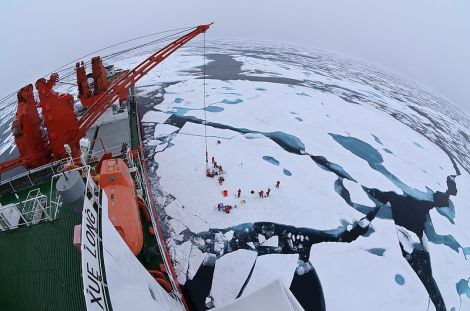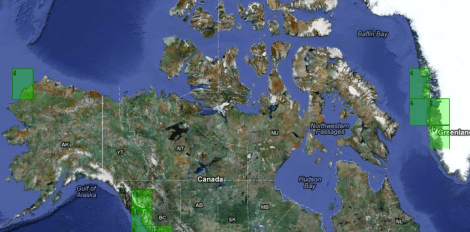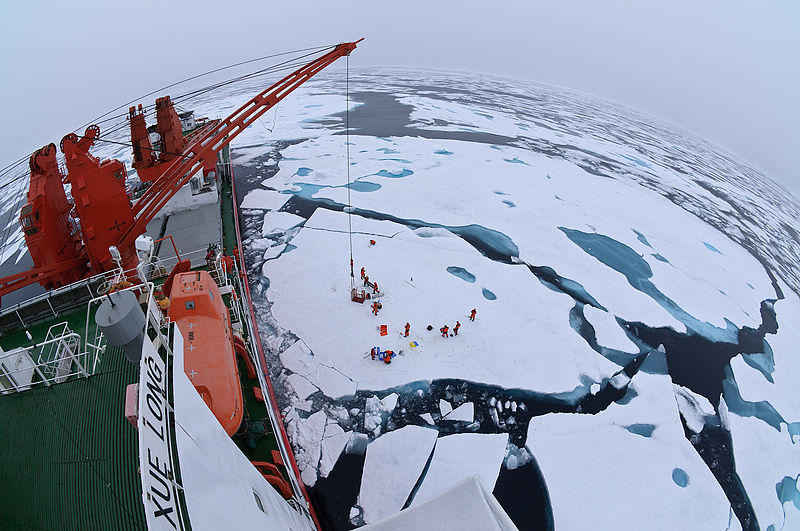Congratulations to the icebreaker Snow Dragon (Xuelong), China’s first vessel to traverse the Northwest Passage. (Please note: Snow Dragon is an awesome name.)
“This is the first Chinese ship to sail this route and of course it is important because it’s a more than 40 percent shorter route to Europe,” [Icelandic scientist Egill Thor Nielsson] said.
The Chinese are even more interested in this route after having found the passage relatively easy.
“It took almost ten days to sail from the East Siberian Sea and through the Barents Sea, and during that time there was real pack ice for only seven days,” he said.
Climate change is opening the prospect of commercial shipping via the Northern Sea Route or the Northwest Passage north of Canada.

Ice breaking in front of the Xue Long. (Photo courtesy of Wikipedia.)
A route running across the north of Canada was long-sought by European explorers as a faster route to Asia. Unfortunately for people 500 years ago, their societies hadn’t yet mastered the industrialization that would generate the carbon dioxide necessary to warm the atmosphere and rapidly melt the ice blocking their path. But they did eventually, making everyone very happy.
In the last decade, the route over top of Canada has become almost routine. In 2010, at least 18 vessels made the transit — compared to nine in 2009. Faster travel is just one of the many new commercial opportunities provided by our rampant commercialism.
According to the live map of ship positions at MarineTraffic.com, there are not currently any vessels traversing the passage. You should go to that link anyway, because it is awesome.

Map of northern Canada and positions of nearby ships. (Image courtesy of MarineTraffic.com.)




